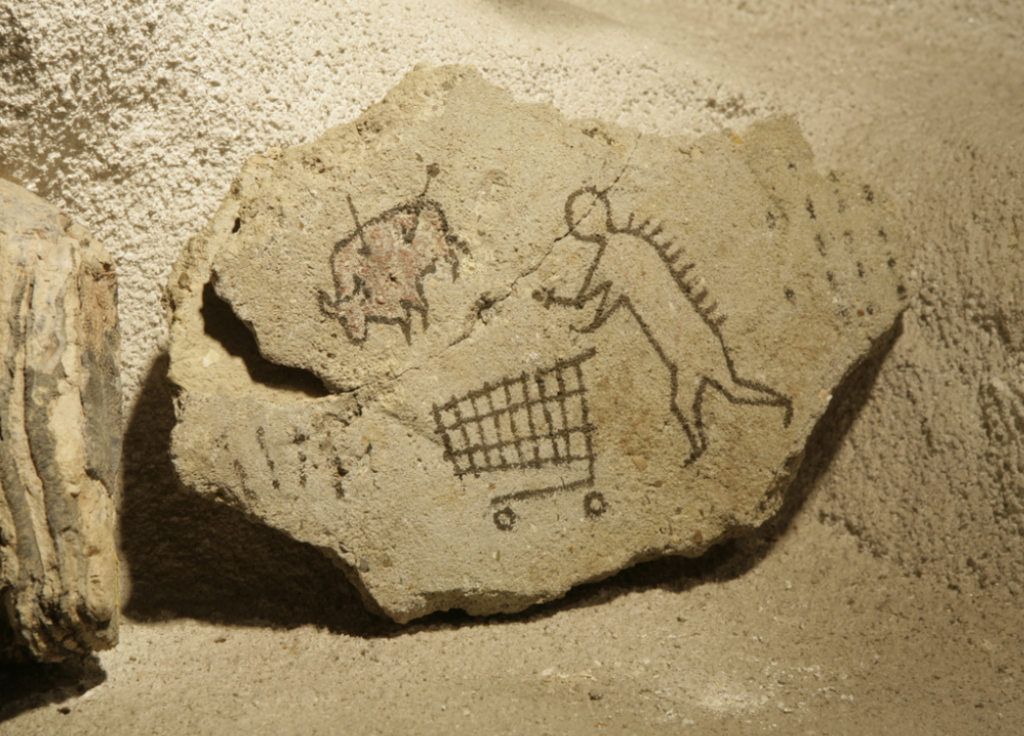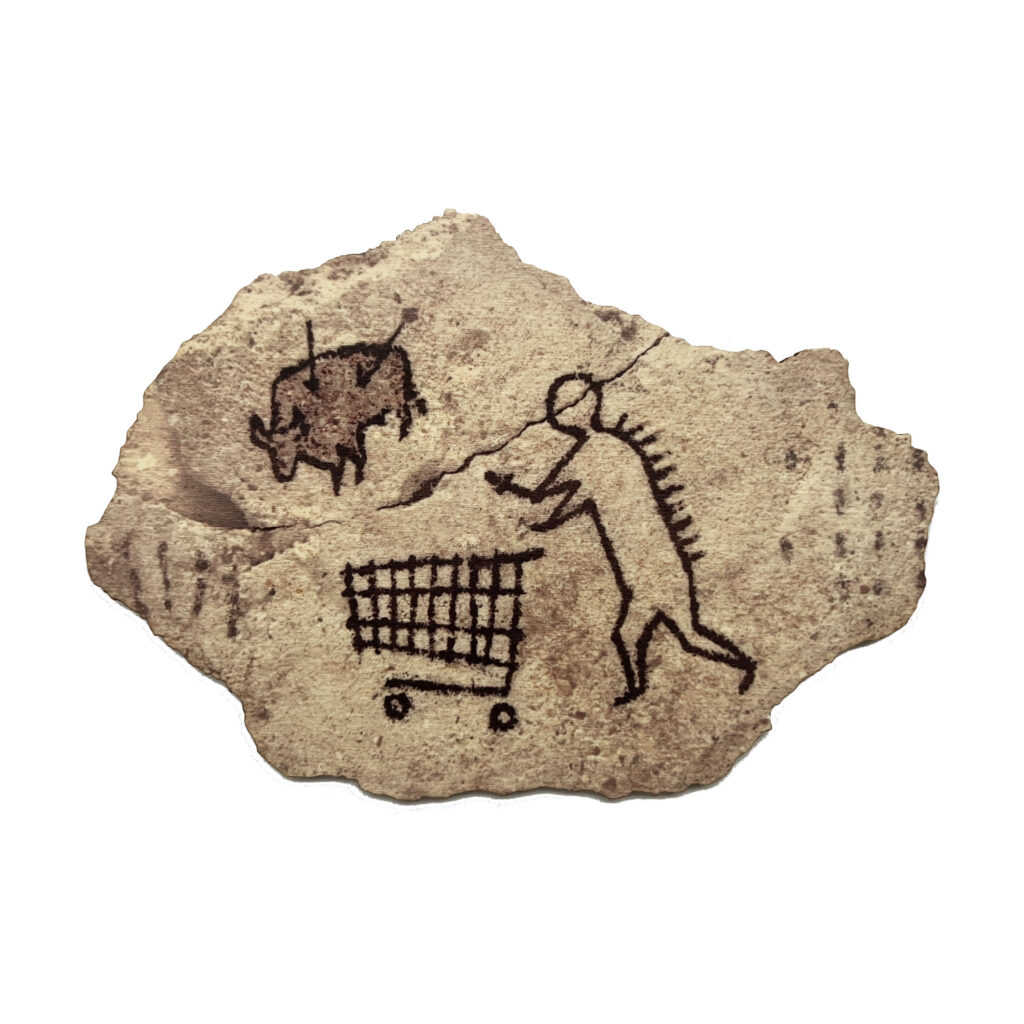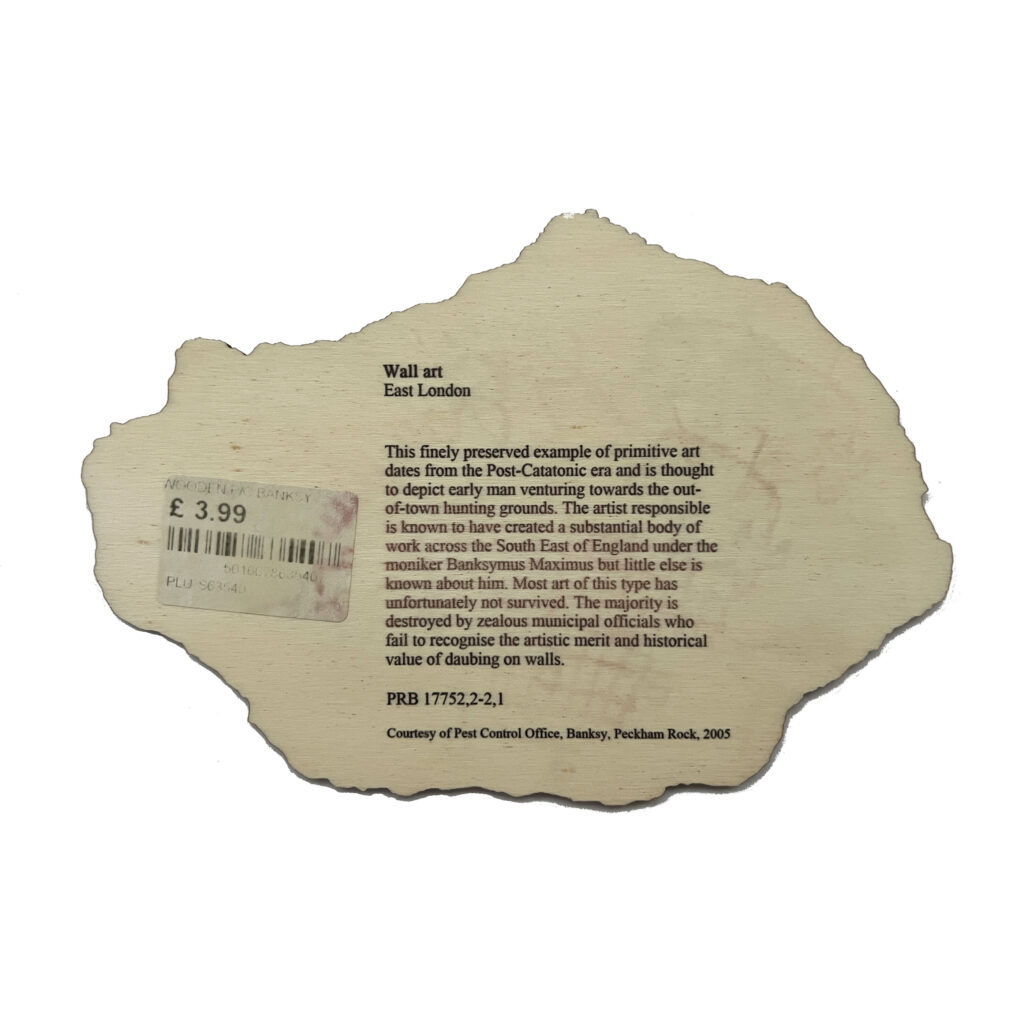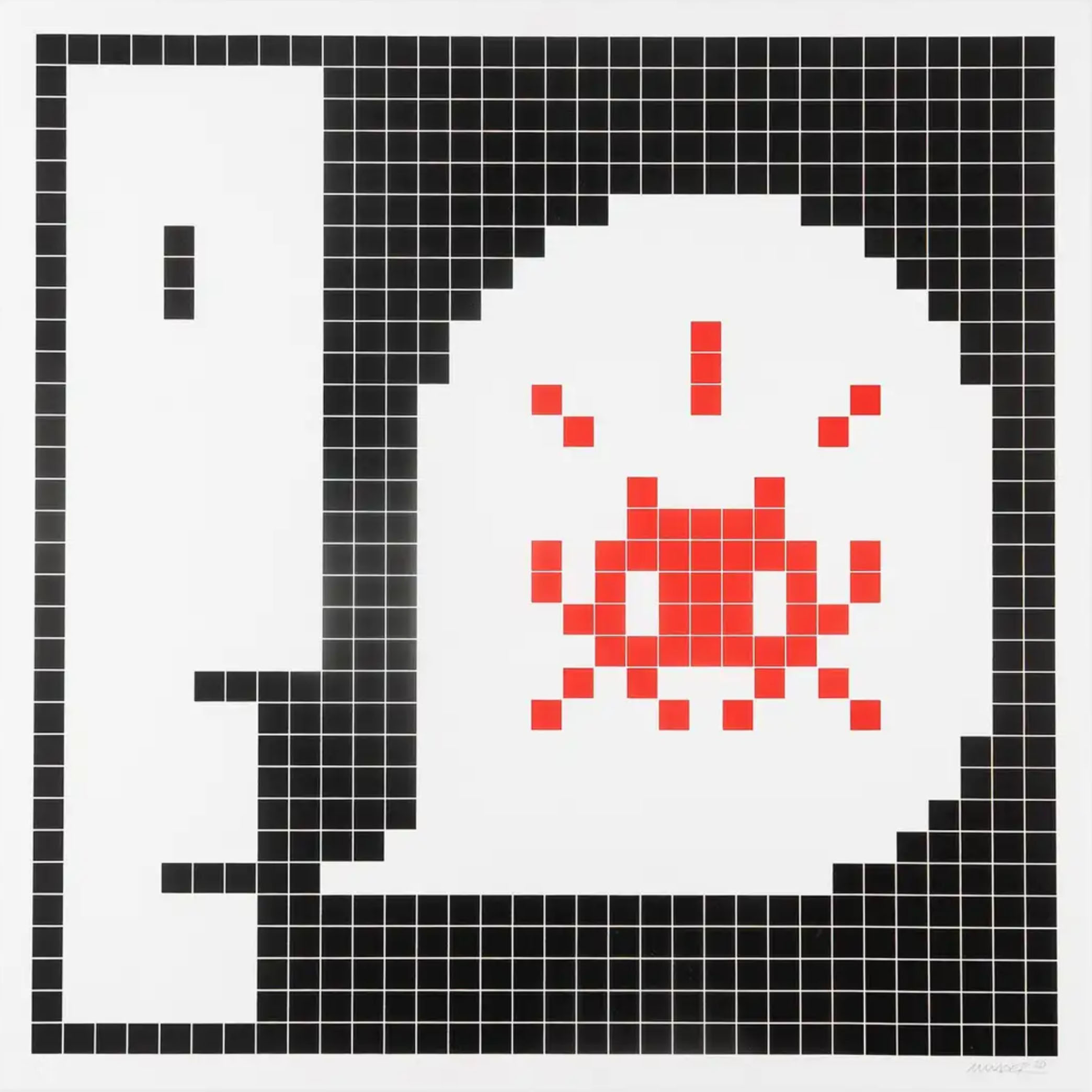In 2005, the enigmatic street artist Banksy installed a provocative piece of concrete in the British Museum’s Roman Britain gallery. The piece featured a drawing of a person with spikes on their back and a shopping cart, while in the distance, a bison with arrows in it could be seen.
The artwork, titled “Peckham Rock”, was a commentary on the value and worth of art and questioned the institutionalised nature of museums. By blending in with the museum’s collection, Banksy’s artwork challenged the notion of what is considered museum-worthy and raised questions about who gets to decide.
The fake label on the artwork, which mimicked standard museum practice of labelling objects with a title, description, and identification number, played into this commentary by suggesting that the piece was a “finely preserved example of primitive art” from the “Post-Catatonic era”, with little else known about the artist besides the moniker Banksymus Maximus.
“This finely preserved example of primitive art dates from the Post-Catatonic era and is thought to depict early man venturing towards the out-of-town hunting grounds. The artist responsible is known to have created a substantial body of work across the South East of England under the moniker Banksymus Maximus but little else is known about him. Most art of this type has unfortunately not survived. The majority is destroyed by zealous municipal officials who fail to recognise the artistic merit and historical value of daubing on walls.
The identification number PRB 17752,2-2,1.”
Despite the artwork going unnoticed for two days, the museum eventually took it down after learning about it through Banksy’s own website.
Four years later, the infamous “Peckham Rock” made a reappearance at the “Banksy versus Bristol Museum” exhibition. The artwork, originally installed by Banksy in the British Museum’s Roman Britain gallery, had caused a stir for its subversive commentary on the value and worth of art. At the “Banksy versus Bristol Museum” exhibition, the artwork was displayed alongside other works by the elusive street artist and was met with much fanfare. Despite its controversial origins, “Peckham Rock” had become an iconic piece of Banksy’s body of work, and its inclusion in the exhibition only added to its notoriety.

Peckham Rock. Image copyright Banksy
In 2018 ‘Peckham Rock’ made a triumphant return to the British Museum after more than ten years under the new title “Wall Art”. Initially placed there as a hoax by Banksy, it was now exhibited with the institution’s permission as a part of the new display that examined objects challenging established narratives and official versions of events. The ‘Object’ exhibition was curated by the popular British comedian and broadcaster Ian Hislop and featured over 100 objects from the museum’s vast collection. The exhibit ran from September 6, 2018, to January 20, 2019, and was accompanied by a three-part BBC Radio 4 series.
The wooden postcard of Banksy’s ‘Peckham Rock’ wall art was authorised for display by Pest Control/Banksy and featured a barcode sticker on the back, which served as additional proof of purchase.


Banksy – Peckham Rock
To purchase Peckham Rock, please visit the store here.
Or Visit our online store here to discover an extensive collection of Banksy’s thought-provoking artworks. Our selection includes iconic pieces reflecting society, politics, and culture, each with its unique message and style. If you’re searching for a particular artwork that’s been difficult to find, don’t hesitate to contact our team of experts. We’re here to help you acquire and add that elusive piece to your collection.
